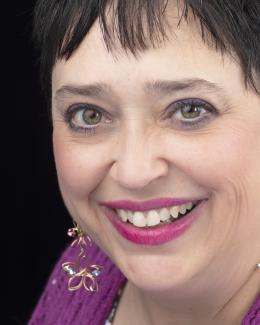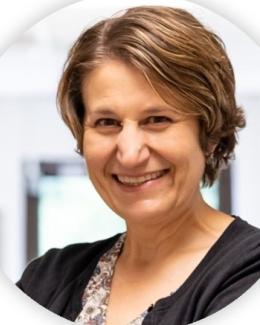Cherlyn Foster spent 22 years in the aluminum industry.
Now she’s excited about introducing some new elements to her life.
Foster, who leads the Stable Isotope Materials and Chemistry Group, joined the Department of Energy’s Oak Ridge National Laboratory about a year ago, looking for new challenges after her previous job was affected by the COVID-19 pandemic.
“My primary experience was with metallurgical engineering and metals manufacturing,” Foster said. “I was looking for a way to make an impact with my process improvement and manufacturing expertise. This role is unique because the team is working to re-establish the domestic stable isotope enrichment capability, which requires both production and research contributions. It fit my skill set in an interesting way.”
Foster originally started at ORNL as a process and manufacturing engineer, then transitioned to group leader after last year’s Reimagining initiative. Skills she’d gained in her previous leadership roles, while in a different industry, transferred nicely to stable isotopes, she said. These include working on safety and efficiency concerns, and collaborating with others both inside and outside the lab.
“With some of our materials science knowledge we’re also supporting materials selection and usage to improve enrichment performance,” she said. “That’s a lot of what makes our jobs fun — not just the science and engineering, but also the opportunity to work with a lot of different people.”
She’s a big fan of mentoring relationships, both passing on her own knowledge and learning from others — for example, about the differences in manufacturing, where she’s spent the bulk of her career so far, and a research environment, where planning a project requires more flexibility when determining what the endpoint should be.
A Colorado native, Foster moved to East Tennessee three years ago and fell in love with the area, which she likes to explore through running, hiking, and visiting different places with her family, who also love to travel. She and her husband of 20 years, Rob, have two teenage children. Eleven years ago, when she was working roles in a plant management, on call 24-7 with consistently long hours, and global support, which required a lot of travel, the couple made the decision for Rob to stay at home full-time to manage the household.
“That’s been critical in what I’ve been able to achieve in my career,” Foster said. “He’s been a huge support to me in maintaining a good work-life balance and making sure the kids are well cared for.”
Foster first became interested in engineering in middle school, after a female electrical engineer spoke to her class.
“I was just really inspired by her story,” Foster said. “She seemed very excited about her career, excited about the opportunity to solve a lot of problems. It was a great way to apply skill sets in math and science — and I had both of those.”
In college, after a stint working for the accounting office that gave her insight into the different engineering disciplines, she chose to pursue a Bachelor of Science degree in metallurgical and materials engineering, attracted by its versatility.
“It really is the base of materials science and metals science, in terms of selecting the right materials to make things work,” Foster said. “No matter which area of engineering you’re working in, having that materials selection is so important.”
Later, she discovered operations leadership gave her a chance to solve manufacturing problems along with metallurgical ones. Goals for the Stable Isotope Materials and Chemistry Group include improving the chemical recovery process, growing both the number of chemists and the amount of high-quality material recovered, advancing the capabilities to fabricate stable isotopes, and efficiently using materials already in inventory.
“I’ve been learning about stable isotopes that we’re working to enrich based on what customer demand is for material going forward,” she said. “As requests come in for us to provide material out of our historical inventory, I’ve been learning about those. Every isotope has its own interesting piece of science around it. For us, the challenge is, how do we manipulate these things and have much less than 1 percent loss?
“Once we’re done is when the exciting thing happens, when these materials are going into a nuclear target to create some brilliant radioisotope for a science application, or a medical application, or a security application.”





